|
|
Charles Tomlinson Griffes (Composer) |
|
Born: September 17, 1884 - Elmira, New York, USA
Died: April 8, 1920 - New York City, New York, USA |
|
Charles Tomlinson Griffes was one of the most important American composers at the beginning of the 20th century.
Charles Tomlinson Griffes began his musical studies with his sister Katharine, who gave him his first piano lessons. In about 1899 he completed his piano education under Mary Selena Broughton, a professor at Elmira College. In 1903 she financed Griffes' musical stay in Berlin, where he studied piano with Ernst Jedliczka and Gottfried Gaston, composition with Engelbert Humperdinck and Philipp Rufer, and counterpoint with Wilhelm Klatte and Max Lowengard, all at the Stern Conservatory. A brilliant piano student, Charles Griffes nevertheless felt more attracted to composition. Thus he decided to leave the Stern Conservatory in September 1905 to study privately with E. Humperdinck.
When he returned to the USA in September 1907, Charles Tomlinson Griffes had already composed several songs and a Symphonische Phantasie for orchestra. At that time, Griffes became director of the music department of Hackley School in Tarrytown, New York. He kept this post until he died in 1920. An excellent teacher, Griffes was held in high esteem by his colleagues. He spent most of his free time composing and promoting his work each summer in New York City. He died of influenza - possibly the infamous Spanish Flu - at the age of 35, while he was working on a drama, Salut au Monde, based on texts of Walt Whitman. He is buried in Bloomfield Cemetery, Essex County, New Jersey. In November 1964 Elmira College held a Griffes festival to commemorate his 80th birthday. |
|
Works |
|
Charles Tomlinson Griffes is the most famous American representative of musical Impressionism. He was fascinated by the exotic, mysterious sound of the French Impressionists, and was compositionally much influenced by them while he was in Europe. He also studied the work of contemporary Russian composers (for example Scriabin), whose influence is also apparent in his work, for example in his use of synthetic scales.His music reflected his eclecticism, as it revealed first German, then French and Oriental, influences before becoming more abstract. His works parallel the musical eclecticism of the Polish composer Karol Szymanowski. It is probably fair to describe Griffes' work as pre-eminent American compositions of the 20th century. Throughout his life he kept in touch with famous composers such as Feruccio Busoni and Sergei Prokofiev. He also maintained relations with American composers as revealed in his diary. Writing in this journal, he says: "At 4 [o'clock], Varèse and I came up to Laura's [Mrs. Elliot] where I played the Pantomine [The Kairn of Koridwen], [Charles] Cooper, [Henry] Cowell were there. Varèse turned [pages] for me and was much interested."
Griffes first began to write music in Berlin, where he was in contact with several German composers. He wrote at that time the songs for voice and piano based on German texts and utilizing a musical language profoundly influenced by Johannes Brahms and Richard Strauss. After 1911 Griffes' music included more elements borrowed from the French impressionists; their timbre, their free structures, and their composers' preference for descriptive pieces (see Three Tone Pictures and Roman Sketches). In 1912 he wrote a tone poem, The Pleasure Dome of Kubla Khan, after the fragment by Coleridge (1912, revised in 1916). Another famous work is White Peacock, for piano (1915, orchestrated in 1919). The Three Poems (1916) reveal a more experimental language, incorporating a lot of dissonances within the framework of a free tonality.
In 1916 Griffes became involved with Asian styles, preceding a similar interest on the part of such American composers as Harry Partch, Lou Harrison, Henry Cowell, and John Cage. After Five Poems of Ancient China and Japan (1916-1917), Charles Griffes wrote Sho-Jo (1917-1919) for Le Ballet Intime and the Japanese dancer Michio Ito. (Le Ballet Intime was directed by Adolf Bolm, ex-dancer at Les Ballets Russes.) This piece achieved several Asian effects through delicate orchestration. In 1917 Griffes wrote a colorful orchestral version of his most successful Asian work, The Pleasure Dome of Kubla Khan. It was probably through French music (for example, Debussy, St-Saëns) that Charles Griffes became attracted to Asianism.
In his last works, Charles Griffes tended to use a more abstract and structured musical style whose language became deeply complex. His Sonata for piano in three movements (1917-1918, revised 1919), the Poem for Flute and Orchestra (1918), and his Three Preludes for piano, Griffes' last completed work, clearly revealed this new turn in his music. The Three Preludes showed several similarities to Arnold Schoenberg's Sechs Kleine Klavierstücke. He also wrote numerous programmatic pieces for piano, chamber ensembles, and for voice. The amount and quality of his music is impressive considering his short life and his full-time teaching job, and much of his music is still performed. |
|
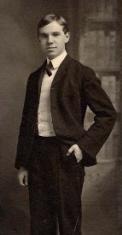
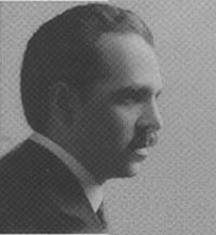
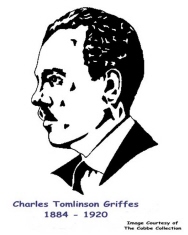
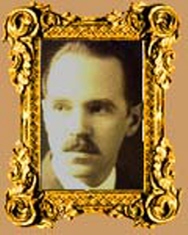
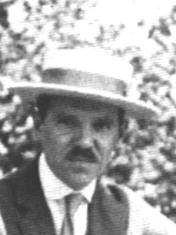
|
|
Source: Wikipedia Website; BookRags Website
Contributed by Aryeh Oron (April 2006) |
|
Use of Chorale Melodies in his works |
|
Title |
Chorale Melody |
Year |
|
Allein Gott in der Höh' sei Her , Chorale Prelude for Organ, A. 104 |
Allein Gott in der Höh sei Ehr |
1910 |
|
|